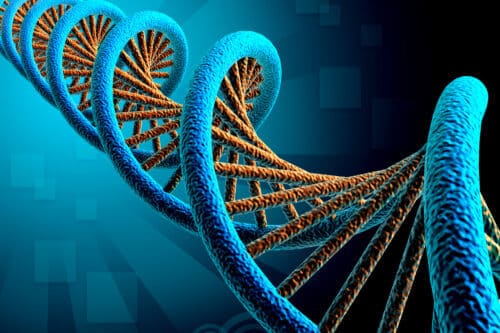Researchers have discovered a central epigenetic mechanism in the moss plant, one of the most ancient plant species, which appeared as early as 400 million years ago, and has survived in our world to this day. According to them, this is a critical mechanism for preserving the function and stability of the genome

Researchers have discovered a central epigenetic mechanism in the moss plant, one of the most ancient plant species, which appeared as early as 400 million years ago, and has survived in our world to this day. According to them, this is a critical mechanism for preserving the function and stability of the genome.
A new tool for controlling gene expression
Epigenetics deals with hereditary changes in gene function, which do not involve changing the DNA sequence itself. A central mechanism in epigenetics is called methylation: a small chemical group known as methyl (CH3), attaches to one of the nucleic acids that make up the DNA sequence, and in this way affects the expression level of the genes - from silence to full strength. The researchers explain that this can be compared to the biblical meanings: they do not change the text, but teach us how to pronounce the words, with what intensity and with what emphasis.
As part of the study, the researchers sought to investigate methylation processes in intercellular epigenetics (where the change is preserved during the division of the mother cell into the daughter cells) in the moss plant - one of the earliest plants in evolution, which still exists today. The research was conducted under the leadership of Prof. Nir Ohad, Head Man Center for Food Security from the School of Plant Sciences and Food Security at the George S. Wise Faculty of Life Sciences, Dr. Assaf Tzemach, Dr. Catherine Domb and Dr. Aviva Katz. The article was published in the scientific journal PNAS.
"The mechanism we discovered is very effective, but fundamentally different from most of the epigenetic mechanisms that maintain the function of the genome in more developed organisms, from flowering plants to humans," explains Prof. Ohad. "We believe that it may be used as an innovative tool to control gene expression in research, medicine and the biotechnological industry."
A peek into evolution

Using genetic engineering, the researchers created moss plants with two different mutations: in some, methylation occurred only on CG sequences in the genome - the most common type of methylation in developed organisms, including humans and one out of three in plants, and in some it occurred only on other, non-CG (non-CG) sequences.
To their surprise, the researchers discovered that, unlike developed organisms, in moss there is a quantitative equality between the two types of methylation, and what's more: the methylation on non-CG sequences is more efficient and active, and has a greater effect on gene expression. They found that this type of unmethylated moss is severely damaged, and its development is abnormal.
"This is a very preliminary mechanism, which gives us a window into the evolution of epigenetic control in plants, already in its earliest stages," says Prof. Ohad. "In the following studies, we will be able to compare the ancient mechanism to the methylation that developed further down the road, for example in the genome of flowering plants, which appeared 100 million years ago, that is, 300 million years after the moss."
"Our discovery revolutionizes the accepted concept", Dr. Zemach reinforces his words and concludes "it proves the importance and effectiveness of the methylation mechanism in non-CG sequences, which in humans exists mainly in embryos and the brain. More than that, it gives us a new and effective toolbox for controlling gene control in every organism - plants, animals and humans. These innovative tools may be used in the future for biotechnological developments in industry, agriculture and medicine."
More of the topic in Hayadan:
- Researchers from Tel Aviv University succeeded in isolating a gene that activated an asexual reproduction mechanism in plants
- About the randomness of evolution, the lack of planning and the flaws in the human body
- Spotlight: Epigenetics - heredity not only in genes / Dorit Ferns
- A new base in DNA may cause a revolution in the field of epigenetics
